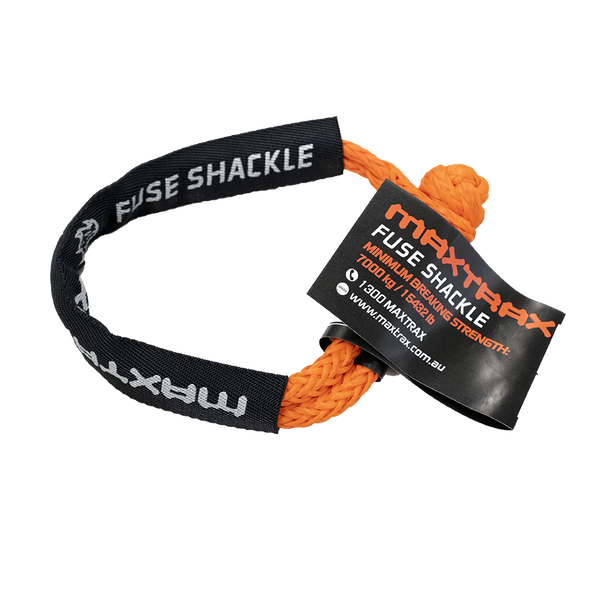Maxtrax markets one of their soft shackles as a "fuse shackle", providing a known weakest point in the chain. You use that somewhere in the middle - inboard of any metal hardware - to minimize the likelihood of mass flying at you. I agree with your point in that if we try to make every part of the chain bulletproof we risk being surprised by the point of failure.
The MAXTRAX FUSE SHACKLE has been designed and tested as part of the MAXTRAX RECOVERY SYSTEM. The MAXTRAX RECOVERY SYSTEM is comprised solely of MAXTRAX products and has not been tested with any third party branded products. Critically, if the MAXTRAX RECOVERY SYSTEM is overloaded the MAXTRAX...

www.maxtrax.com.au
Looks to be designed to fail at 7,000 kgs (15,432 lbs).
I'd like to see people's opinions about intentionally putting a weak point in a recovery chain. As a practical matter my ARB recovery point is rated for 17,500 lbs (margin unknown, must be some), which makes me wonder how precise a soft shackle failure can be engineered. It certainly can't be proof tested individually so it's rated by similarity but whether it actually fails at 7,000 kg seems completely determined on workmanship and condition of the rope. IOW, what is the tolerance for that value?
I also wonder if an engineered and designed point like an ARB with 5 bolts holding it to my frame is rated to 17,500 lbs what do you suppose is the failure point of sketchy points like that plate bumper? That could have happened at half that, which renders the fuse shackle as unhelpful.
So rather than going overboard convincing yourself you need a higher rated piece of gear the race becomes to the bottom to be the lightest thing and you'll never be able to generate enough force to actually recover anyone as you'll end up with a length of dental floss in the middle.
If you've sharpened your pencil and done your analysis why must a failure be assumed as imminent? As a project manager once asked in a critical design review meeting, "Are there any unknowns we don't know about?" Sure there are but we can't paralyze ourselves going down what-if rabbit holes. If the gear is all sized appropriately and is trustworthy and you take precautions with keeping the area clear then the risk is managed. It's what riggers and tow drivers do everyday.
It seems to me the fuse should be things like winches stalling and the surprise be bumpers pulled off or frames tweaking. If there's any question to the integrity of the connection you have to make a decision maybe not to use it.




